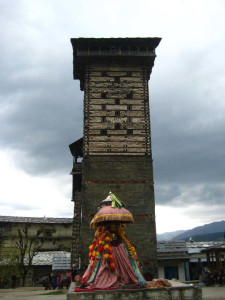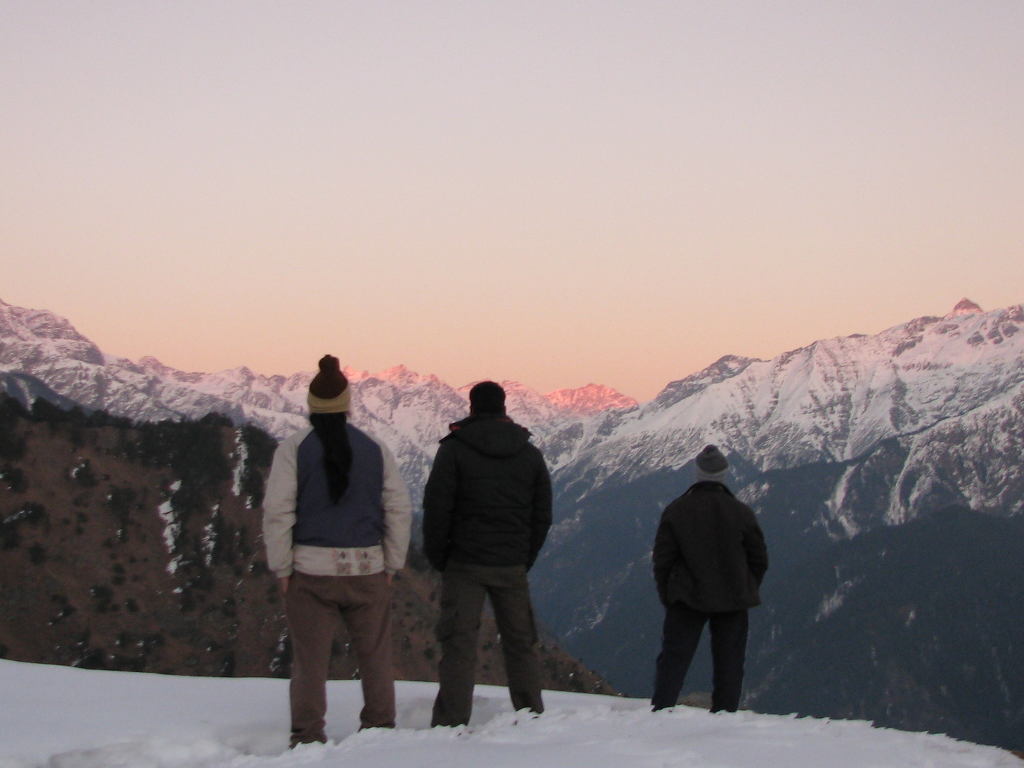
Banjaar Valley GHNP: A Gateway to Heritage and Himalayan Beauty
Banjaar Valley, nestled in the southwestern region of the Great Himalayan National Park (GHNP), is a treasure trove of natural grandeur, spiritual heritage, and cultural depth. Whether you’re a nature enthusiast, a history lover, or a spiritual seeker, exploring Banjaar Valley in GHNP provides an enriching experience of the Himalayas. With scenic villages, ancient temples, panoramic treks, and sacred lakes, this valley is a must-visit destination for anyone touring the region.
Shiranga Rishi Temple and Chaihani Fort
The Banjaar valley offers three main landmarks which are worth visiting.The historically important Bala temple of Markanday Rishi and Durgamata, the Shringa Rishi temple at Bagi, which has a large statue of Rishi Shringi and intricate wood carvings depicting 24 different births of God (Rama, Krishna, Narsimhan Barah etc.) and Chehalis Fort, in Chehani which is approximately 1000 years old and rises 11 stories in to the air. It offers breathtaking views of the mountains and valley around, although one should use caution as the balcony is not very safe. Additionally, the fort has a 400 meters tunnel (now closed) and a Krishna temple (RaghuNath ji) on one of the upper stories. Please note that it is considered disrespectful for visitors to any temple to not remove their shoes before entering. Please show respect by simply leaving your shoes at the door.
The key tourism points in the Banjaar Valley are:
Shoja
This village is situated at an altitude of 2,680 meters on the Aut‐Luhari road leading to Shimla at a distance of about 40 kms from Aut. More notable here, than perhaps elsewhere in Seraj, is the peculiar style of architecture of many of the older houses. The upper storey of these old fashioned dwellings appears to be merely an open work frame so designed for the storage of hay during winter months. The rest house at Shoja is a comfortable bungalow and is located in a setting of marvelous scenic surroundings. During the appropriate season excellent small game shooting is available within easy distance of Shoja. From here to the top of Jalori Pass is not a difficult ascent steep, but a good rideable road is bordered in early summer by occasional clumps of purple and other flowers. In sheltered ravines near the head of the pass. Even in the July shallow snow patches may still be in evidence. Northwards, i.e, towards Kullu and Lahul are visible several far flung snow‐crowned ranges, visible beyond the intervening trees, and afford frequent excuse for looking backward.
Jalori Pass
The charm of the country around the pass is its semi tropical forest vegetation. The hillsides are covered with dense fir and spruce and higher up stand deciduous arboreum , rhododendron and evergreen oakwoods. At the top to the pass, the view on all direction is superb.
Raghupur Fort
During the winter, Raghupur welcomes you with snow capped peaks . This picturesque site located at approximately 3540 mts is the location of an old fort built by the king of Kullu. The fort is surrounded by wide trenches and there is a small pond inside. The walls of the fort are marked by bullett holes from sieges. There is a good camping he re as well as fantastic views of the Outer Seraj valley, as well as access to a near by ski point.
Sareulsar Lake
Sareulsar is a small lake (or a large pond) located at about 3050 meters. The area is extremely beautiful as well as being a sacred spot for worshiping the Goddess Budhi Nagin. Budhi Nagin is goddess of Ghee (clarified butter ) and pilgrims come to Sareulsar to pray for good quantity ghee in the coming year. As part of the worship, the pilgrims walk around the lake pouring an unbroken line ghee. There is good camping in the area, as well as small caves. Additionally, the area is surrounded by dense forest and fields of wild flowers.
Lambhari Top
At 3600 meters , Lambhari offers beautiful views of the Himalayan chain. The peak offers to distinct faces, one of which looks will make you think you are walking on the moon. This is an excellent area for coming in solitude of nature. Additionally there is an abundance of effective ayurvedic/naturopathic medicines to be found growing in the area including Kauri, Patish, Losar, Talshi, Chunkari, Tangul and Dhupnu.
There are also wild animals and birds in the area.
Sakiran Top
The Skiran dhar ridge leading to Lambhari offers beautiful vie ws of the Himalayan chain at Sakiran. There is a beautiful temple of Rish i Shringi ji. The area offers good camping in the fields and in the many cave s. There are also wild fruits available during the summer month.
Srikhand Mahadev Peak
Far off in Kinnar Kailash mountain range, lies in silence the Srikhand peak (5139 mts.) another celestial seat of Lord Shiva. It is approachable on foot from Bathad to Bashleu Pass 3200 mts. and by the road. From Nirmand both converging at Sarahan and alpine village in Kurpon valley of Outer Seraj. The trek from Sarahan to the top of the peak entails a breath‐taking journey through deep expanse of famous Girchi forests. Seldom visited, the country offers a stunning panorama of fauna and flora. Bhim Dawari is the base to climb up to Nainsar, a small lake blissfully beautiful and sleepy. The deep semi‐circle rimmed with craggy rocks and towering forests bringing new dimensions to life.
Bahu
Bahu is the celestial seat of all powerful Bahu Yognees in Seraj. The view all around is captivating and snow capped mountain can be seen from here.
Gadagushaini
Garagushaini is very beautiful area. It is situated at the bord er of district Kullu and Mandi. It remindes one of the Sonmerg area in Kashmir. There are many temples and fort including Tungasi Dibber and Dalnu. The road to Garagushaini village breaks off from state highway‐11 just after Jaipur Jibhi.
From spiritual sanctuaries to scenic mountain tops, Banjaar Valley in GHNP is a diverse and immersive destination. Its perfect mix of nature, history, and culture offers a deeper understanding of the Himalayan ecosystem and Himachali heritage. Whether you’re hiking, sightseeing, or seeking serenity, Banjaar Valley GHNP delivers an unforgettable experience in the lap of the Himalayas.




